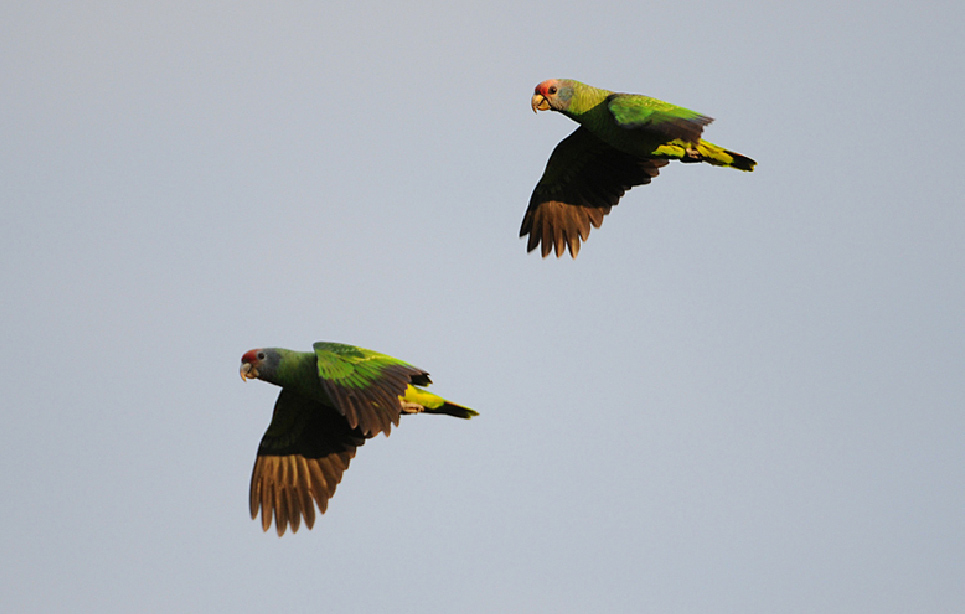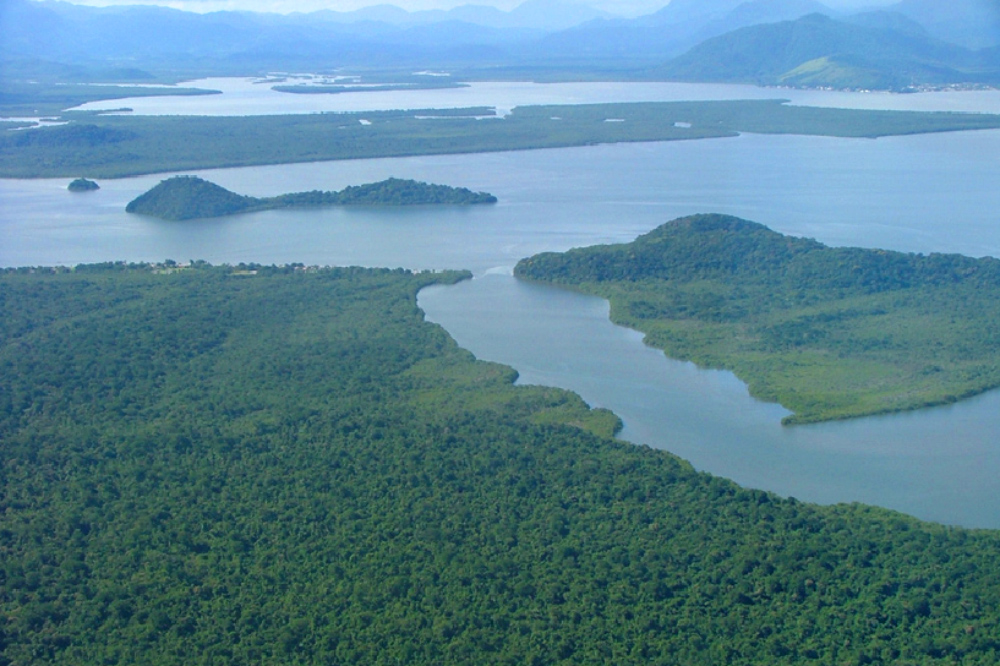Conservation success story for Brazilian parrot
Following nearly 24 years of targeted conservation across its range in Brazil, Red-tailed Amazon is no longer considered a threatened species.
Over this period, the species has been downgraded on the International Union for the Conservation of Nature (IUCN) Red List from Endangered to Vulnerable and latterly, at the end of 2017, Near Threatened.
This positive change in status has not happened overnight. Loro Parque Fundación (LPF) began supporting the conservation of this species in 1995, and only after almost 24 years and US$561,400 of support from LPF have conservationists been rewarded with the official recognition that the species is no longer threatened.

A pair of Red-tailed Amazons in flight (Zig Koch/SPVS).
LDF's Brazilian counterparts can justly claim to have achieved success in averting Red-tailed Amazon’s extinction. In Paraná State, LPF established its first collaboration with Pedro Scherer-Neto of the Museum of Natural History in Curitiba, and then between 1999 and 2006 with the Institute for Ecological Research (IPÊ) working especially on the island of Superagüi. The LPF also did some work in São Paulo State with the Institute of Conservation Biology of the state university, but from 2005 until now the main partner in Paraná and São Paulo has been the Society for Wildlife Research and Environmental Education (SPVS).
Since 2003, SPVS has conducted an annual co-ordinated count of the species, with July 2018 recording a total population of 9,112 individuals, 81 per cent of which were in Paraná and the other 19 per cent in São Paulo. The only higher count was of 9,176 in 2015. Back in the mid-1990s, the total population was estimated to be as low as 2,500 individuals. The annual census mobilizes more than 50 volunteers, including students, local residents and other people aware of the cause, who join SPVS biologists during the count. The species exists only in a narrow strip of coastal plain, and every day Red-tailed Amazons fly inland from the collective roosts on a few low-lying islands to the forest on the mainland hills in search of food, and return to the roosts in the late afternoon.

Aerial view of coastal islands of Paraná, vital for the breeding and roosting of Red-tailed Amazons (Zig Koch/SPVS).
What has been achieved for Red-tailed Amazon deserves celebration, but potentially precarious populations such as this require vigilance, so that they do not suffer reversals. In the case of this species, the concentration of individuals in a threatened region of the Paraná coast still worries experts. Elenis Sipinski, directior of the Red-tailed Amazon Conservation Project, warned: "Almost half of the total population of the species is concentrated in the islands in front of the coastal plain of Paranaguá and Pontal do Paraná, very close to the area that the State Government intends to transform into a private port complex."
She estimates that the construction of the Port of Pontal do Paraná would affect at least 4,000 Red-tailed Amazons, as well as generate other environmental and social impacts in the region, such as the reduction of Atlantic Forest remnants near Mel Island, the second largest tourist destination in the state of Paraná. Native forest areas and the creation of new conservation units that connect these areas are essential for the survival of the species and should be treated by society as sanctuaries of biodiversity. How to achieve this will be the challenge for the project going forward.

